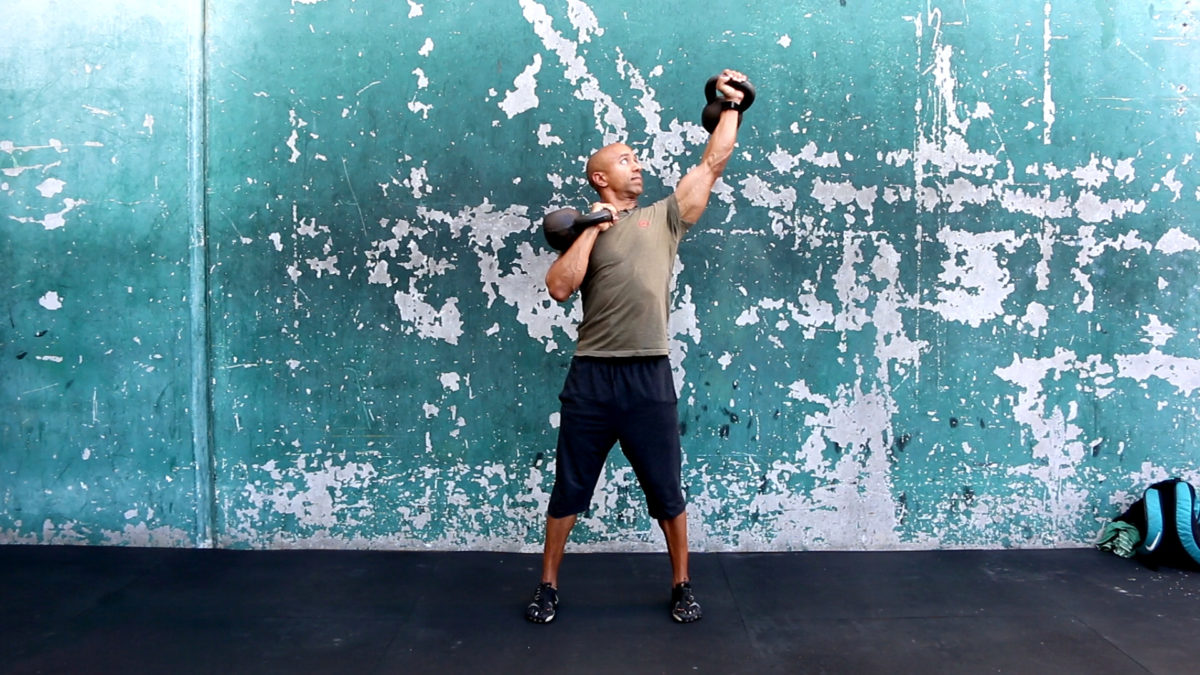There’s a quote I love to recite to my students when teaching fundamentals of strength for an overhead press.
The quote is this: “you can’t fire a cannon out of a canoe”, by Charles Poloquin.
It’s not hard to imagine what would happen in this scenario. The canoe would be thrust backward, and the cannonball would land well short of its target. That’s because energy gets lost if it’s not able to transmit through a stable foundation.
The same lesson in physics applies to your potential to build strength.
A stable foundation helps you build strength, while an unstable foundation leads to weakness.
If you attempt to move or hold against resistance without stability, your effort will be lost. The same is true if that stability is coming from a place where it’s not supposed to because of compensation.
Poor stability will stagnate your potential to get results until you:
1) Discover where your stability is deficient.
2) Follow through with a corrective routine to reinforce it.
3) Integrate that stability in every repetition of your functional strength movements.
These three steps are what you need to meet the demands of exercises that develop strength. And do it with the least cost of your energy resources and your physical structure.
Overhead press
An example of an exercise that I often see athletes struggle with is the overhead press. They are unaware that they are tasking the same muscles to do both the majority of the pressing as well as the stabilizing. It’s impossible to succeed with that demand.
It creates a task-based confusion that leads to subpar strength in both duties. And diminishes results from a sub-optimal pattern of effort.
If instead you task the right muscles and bones to stabilize as you press, then greater results become available to you.
In an overhead press, there are many muscles that should be acting to stabilize. But they can’t do their jobs well unless the bones are in alignment. And the bones won’t be in alignment unless you command your muscles to keep them there.
How your bones and muscles contribute to stability
1. Form Closure
This is when your adjoining bones are in a position that allows them to “form” a tight juncture to stabilize. From there, the surrounding muscles receive the right signal to get onboard.
The resulting muscular tension provides you with the added layer of support and control you need to have a strong foundation.
2. Force Closure
Force closure is when a group of muscles works together to provide stability around a joint. A preceding form closure allows your muscles to work in their optimal capacity.
There needs to be harmony between the bones and muscles for the most-stability. Your articulating bones have to be in correct alignment. And your muscles must have the right amount of tension and length to get those most force production.
The link between those two systems is your fascia. This weblike connective tissue intertwines the entire body, including your organs. Your fascia is the reason why what occurs at your feet or hips affects your shoulders.
Now that you understand more about stability, let’s dive back into the overhead press.
Your shoulder girdle is mobile in that press, so it needs a stable platform nearby to press from. That’s where your thoracic vertebrae come into the picture. They are the most local area of bones to supply the necessary form of closure stability.
The muscles that provide force closure around your thoracic spine and shoulder complex are vast. But I’ll name several to give you an idea:
- Lats
- Serratus
- Multifidus
- Rhomboids
- Lower trapezius
- Rotator cuff muscles
Keep in mind that all the rules of tension and length apply to the ability of these muscles to work. But it’s the largest of the group, your latissimus dorsi (lats), over which you have the most conscious activation. And has the potential to provide the most stability for your shoulder to press from.
So when you task your lats with tension to ‘pack’ your shoulder girdle on top of your thoracic spine, your strength potential goes up.
‘Packing’ your shoulder is a term used in the strength community. It is an intentional positioning of the shoulder to have optimal form and force closure. This stability skill is necessary for a whole range of pushing and pulling exercises.
Some cues that can help you to create this are to:
1) Stack your rib cage over your hips so you have a neutral spine and pelvis. Maintain this for the duration of the exercise.
2) Then bring your shoulder blades down and back, as if you were going to tuck them into your back pockets. Maintain this for the duration of your exercise. The idea is to create as much distance between your ears and shoulders.
You should notice that the first cue brought the rest of your spine and pelvis into the equation for stability. That’s because stability is multi-layered and interdependent.
And your limiting factor is the capacity of your muscles and fascia to hold that all in the right place. That hold is a result of maintaining an isometric muscular contraction (IMC). This is where a muscle is neither lengthening or shortening.
When you develop IMCs around correct alignment, you have the best chance to reach your strength potential. In the coming article, I will dive deeper into that topic.
To help you discover where your stability may be deficient and how to fix it, I’ve created a solution. It’s called Search and Rescue Mobility (SARM). With this program, you receive a self-assessment screen to identify what you need to work on. And a daily routine to guide you towards optimal results.
Get yours here.
As always, stay athletic.
Your coach,
Adam

